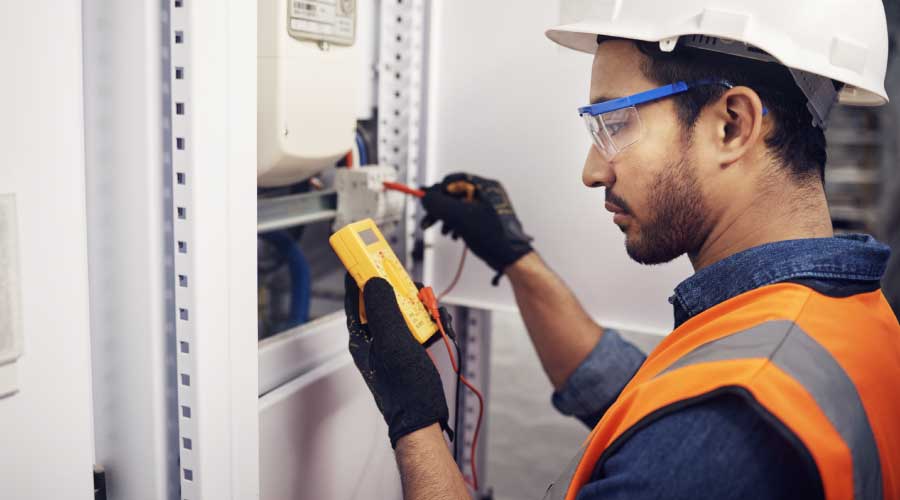
City of Mesa Illuminates with Smart LED Lighting from Signify
Arizona’s third largest city is using smart lighting as part of its Smart City initiative. November 17, 2023
Mesa is the third largest city in Arizona and one of the fastest-growing regions in the United States. In 2018, the city began upgrading its street lighting infrastructure to energy-efficient LED technology. As part of Mesa's Smart City initiative, this effort aims to deliver free Wi-Fi connectivity to citizens, enabling digital equity; supporting community safety; and complementing Dark Sky efforts – all with the help of Signify.
While Mesa first set out to upgrade its streetlights to LED technology for its energy- and cost-savings benefits, “We soon realized that the infrastructure could deliver much greater value to our community,” says Harry Meier, deputy CIO for innovation and smart cities for the City of Mesa, Arizona.
The city developed a Street Light Master Plan to help unlock this potential and complement its strategic plan to nurture a smarter city. In Mesa’s view, “a smart city is one in which the latest technologies and data-driven insights are leveraged to improve the quality of life, civic engagement, economic development, service delivery, and community vibrancy for its citizens, businesses and visitors.”
Mesa saw an opportunity to support this ethos by strategically dimming the city’s street lights, and thus, help reduce energy use, light trespass in neighborhoods and sky glow as well as better meet citizens’ needs.
“During the 2018 Streetlight Master Plan, the city was able to establish four distinct lighting zones for dimming based on land area usage, hourly traffic volume and customer feedback. We realize different areas of the city have unique lighting needs and the dimming zones allow us to better meet the needs of our citizens,” says Nathan Curtis, Mesa Street Light supervisor.
Curtis and his team ran a streetlight dimming pilot and conducted extensive research, ultimately dividing Mesa into four street lighting zones – as outlined in the Master Plan. Streetlights would be dimmed or brightened remotely based on each zone’s unique requirements, and all lights would not reflect upwards to preserve the night sky. Preventing unnecessary light from casting upwards supported Mesa’s Dark Sky initiative and became a staple component of the Street Light Master Plan. The Dark Sky initiative ensures the preservation of Mesa’s starry night sky from light pollution and is one reason tourists visit its desert lands.
Signify’s Interact connected lighting platform offered the flexibility Mesa required and the simplicity to build upon the city’s existing street lighting infrastructure. Nodes were installed on each luminaire, allowing Mesa’s street lighting team to remotely control the lighting and set dimming schedules.
Signify’s Interact platform also allowed the city to have access to diagnostic and energy data. The city can optimize energy use and rapidly detect any faults in the system. Curtis and his team will know instantly when a light goes out, so they can efficiently deploy a maintenance team to fix it.
By extending its street lighting infrastructure with connected technology, Mesa laid the foundation to unlock even more value for its city and citizens beyond the smart dimming.
Mesa also wanted to advance digital equity within its city – by providing reliable public Wi-Fi coverage across a ten square mile downtown radius.
“COVID-19 brought to light the imperative of broadband connectivity for our citizens. High-speed internet went from being a luxury to being a necessity - especially for those working and studying from home,,” says Meier. “For others, access to Wi-Fi is critical, so they can get the healthcare information they need.”
Meier and his team began exploring new technologies to overcome traditional challenges that came with the rollout of public broadband such as weak signals.
Signify BrightSites offered a scalable solution in which the city could install broadband communication nodes into its existing streetlights, creating a wireless mesh network and enabling wireless fiber connectivity. The nodes installed into the luminaires provided a simple solution to achieve broadband connectivity.
The city’s wireless broadband connection powers public Wi-Fi, cameras and sensors to provide real-time crime support for law enforcement and access to better education, economic and entertainment opportunities in the community.
Mesa and Signify continue to evolve its street lighting infrastructure to meet changing demands of this growing, smart city.
More collaboration between the Street Lighting Department and IT will leverage the lighting network for sensors that monitor traffic, air quality and noise, for example, to further drive quality of life improvements in the city.
“We’ve got the lights, the controls of the lights and the broadband connectivity from the luminaire. Now, the sky is the limit to what we can build on top of that, to help Mesa shine,” says Meier.
Next
Read next on FacilitiesNet












